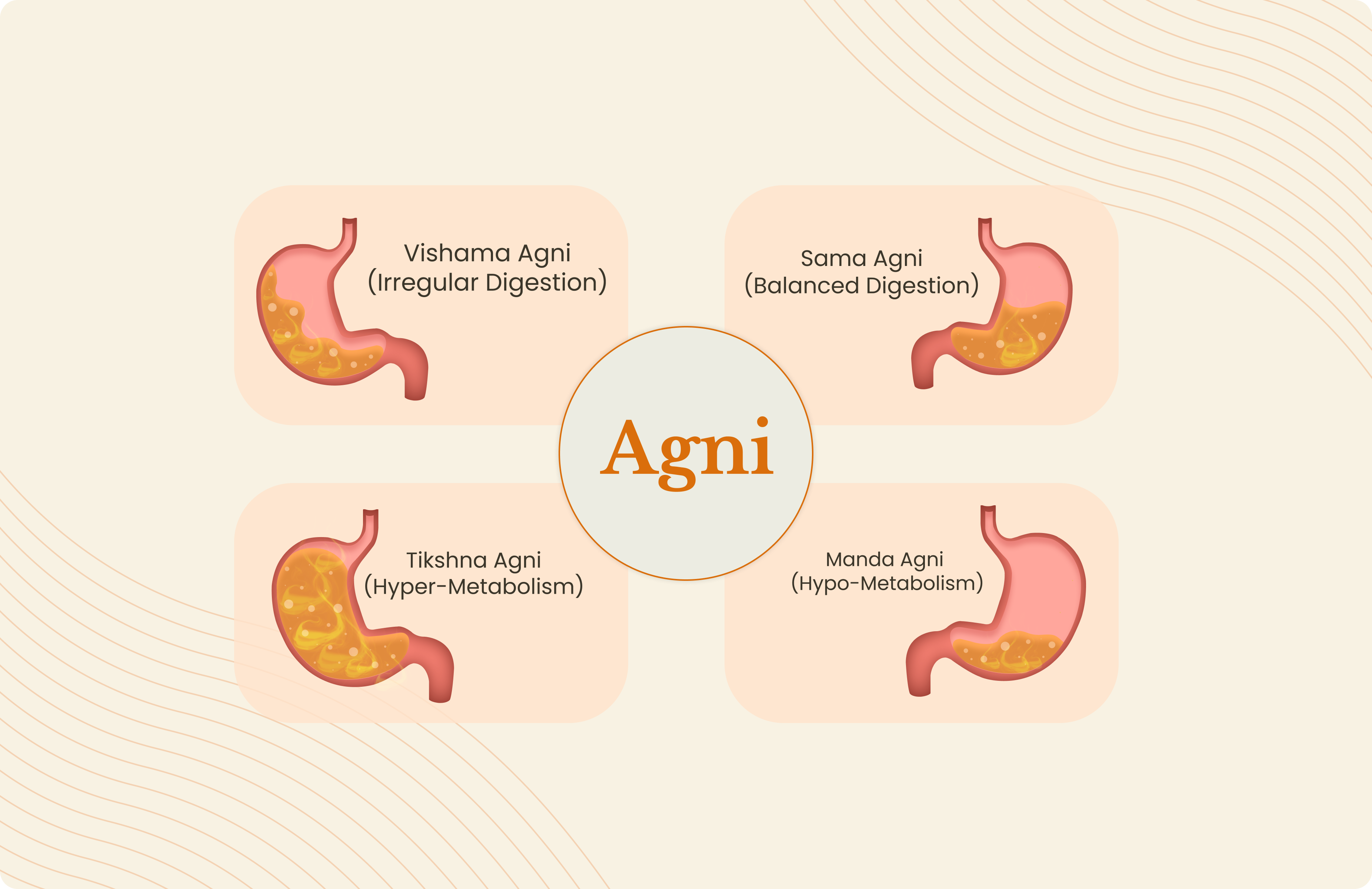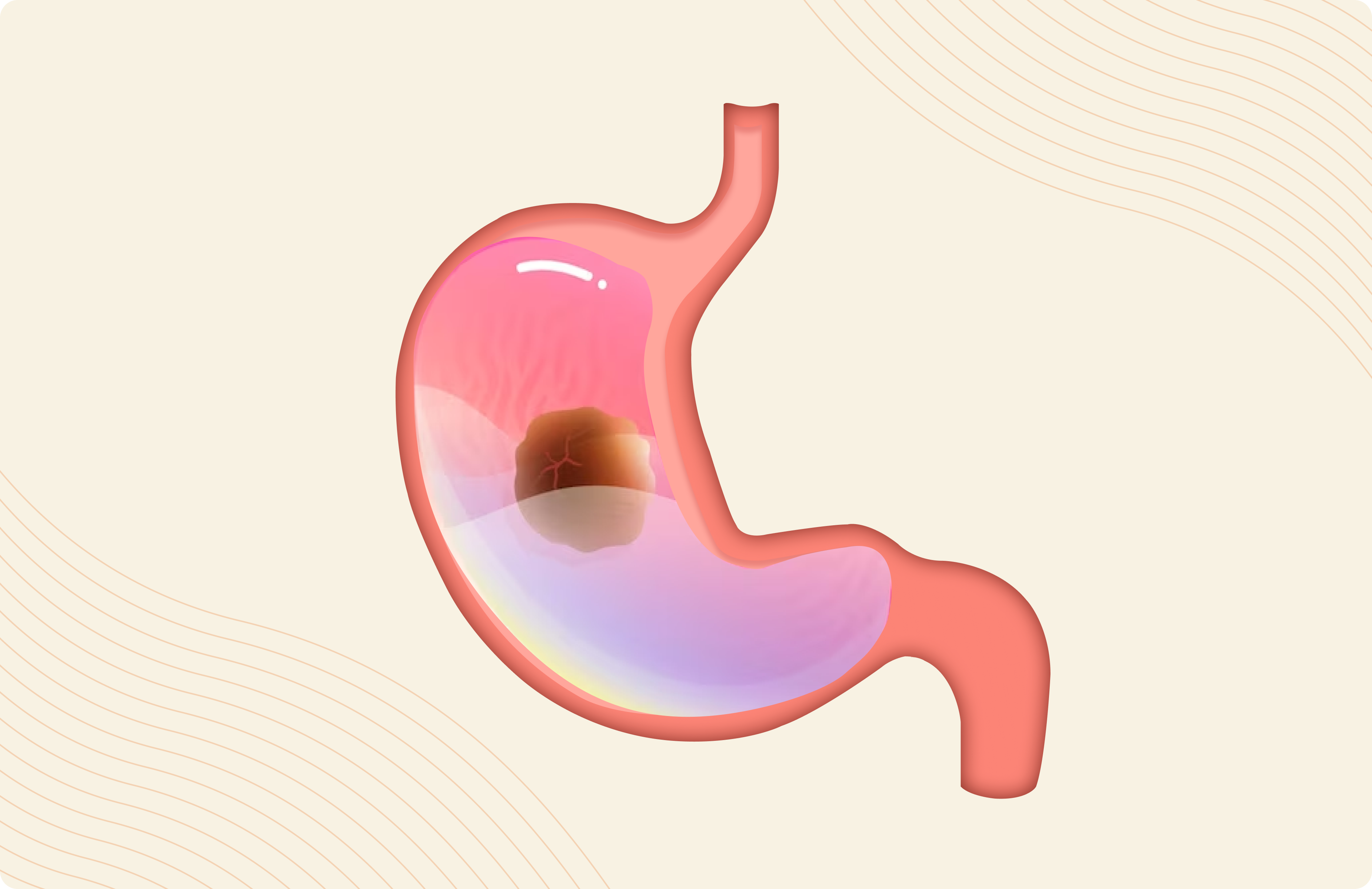Agni: The Ayurvedic Key to Health & Wellness

Gastro Wellness | Ayur AI
Dr. Prathiban R ,B.A.M.S., MSc,Ph.D
Updated on May 10,2024
Ayurveda, the traditional system of medicine in India, emphasizes the vital role of Agni, the biological fire governing metabolism, in health and disease. Agni is present throughout the body but is primarily focused on three main areas: the jatharagni (digestive fire), the five bhutagnis (housed mainly in the liver), and the seven dhatuagnis (located in the body's tissues).

Understanding Agni and Its States


Agni, which means "fire" in Sanskrit, is the force that transforms food, emotions, and sensory experiences into energy and wisdom. There are four main states of Agni:
- Vishama Agni (Irregular Digestion): Linked to Vata dosha, this state is characterized by symptoms like gas, bloating, constipation, and unpredictable emotions like anxiety and restlessness.
- Tikshna Agni (Hyper-Metabolism): Associated with Pitta dosha, this state features symptoms such as heartburn, rapid digestion, and emotional heat like anger and impatience.
- Manda Agni (Hypo-Metabolism): Tied to Kapha dosha, this state leads to symptoms like heaviness, slow metabolism, and emotional expressions like sadness and lethargy.
- Sama Agni (Balanced Digestion): This ideal state indicates balanced doshas and leads to perfect health, balanced emotions, and a strong ability to handle stressor

Ama: The Toxin Linked to Agni


Ama, or toxins, are undigested food matter caused by weak Agni. These toxins can clog the channels of the body, leading to disease. Ama begins its accumulation in the gastrointestinal tract, spreading to deeper tissues if not addressed. Signs of Ama include gas, lethargy, indigestion, and a lack of elimination of bodily wastes

The Interplay Between Agni and Ama


When Agni is balanced, it prevents Ama accumulation and promotes the elimination of impurities. However, if Agni is imbalanced, Ama can build up, leading to various health issues. High-quality Agni ensures that even less pure foods can be transformed into beneficial nutrients, while impaired Agni turns even the healthiest foods into toxins

Igniting Agni and Burning Ama


To maintain and restore Agni, Ayurveda advises: Avoiding habits that lead to Ama, like eating late, overeating, and consuming processed foods. Adopting practices that ignite Agni, such as sipping hot water, eating warm, fresh meals, and ensuring "stomach hunger" before meals. Engaging in daily exercise and practices like pranayama (breath control).

Ayurvedic Principles for Balanced Agni


To nurture one's internal fire, Ayurveda recommends:
- Using herbs and spices in cooking.
- Fasting and light eating to boost Agni.
- Adhering to specific tastes to influence Agni based on one's dosha.
- Preparing and consuming food in ways that support digestion and prevent Ama buildup.

Agni stimulant

Lavana Bhaskar Churna, Tikatu Churna, Vaishvanara Churna, Gandharvahastadi Kashay are Agni Stimulant which are recommended based on your prakriti,agni status only advised to take after consultation with Doctor.

Conclusion

Agni's role in Ayurveda extends beyond digestion, influencing mental and emotional health. A balanced Agni leads to a life of wellness, while imbalanced Agni can set the stage for disease. By understanding and nurturing Agni through Ayurvedic practices, individuals can enhance their health and prevent various ailments.








